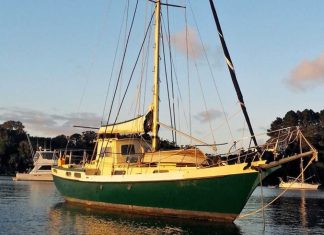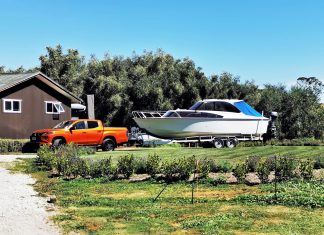A recent national survey (Cawthron Report 4113) of Kiwi boaties highlighted just how much effort goes into hull cleaning, what’s getting in the way, and what would make the whole process easier. While everyone agrees a clean hull is a good thing, getting it done—without breaking the bank or jumping through regulatory hoops—is another story.
The reality of hull cleaning in New Zealand
For most of us, antifouling is a regular job, with new coats going on every one to three years. Hull cleaning happens more often, whether it’s a quick scrub with a dive brush or a full haul-out and waterblast. Some do it themselves, while others pay contractors, but either way, it’s a significant cost—on average, Kiwi boaties are spending $2,755 a year on hull maintenance. That’s nearly a fifth of total boat maintenance expenses.
Time is another big factor. On average, 22 hours per year are spent on hull cleaning and antifouling—again, about 18% of the total time spent maintaining a boat. It’s a commitment, and for many, it’s not just about keeping the boat performing well—it’s also about meeting regional and marina biosecurity rules. In Auckland, two-thirds of boaters clean their hulls mainly to stay compliant.
What’s standing in the way?
If there’s one thing boaties agree on, it’s that hull cleaning shouldn’t be difficult. The biggest frustration? A lack of practical, affordable options. Haul-out facilities are too few and far between in some areas, and when they are available, they can be pricey. Aucklanders in particular aren’t happy with the availability of cleaning facilities. In-water cleaning could be a solution, but strict regulations make it almost impossible to do legally.
Cost is another sticking point. Between haul-out fees, antifouling, and regular cleaning, it all adds up. Many reckon councils could do more to ease the financial burden, whether through lower fees or incentives for responsible maintenance. Others want to see better antifouling options on the market—products that last longer, work better, and are safer for the environment.
There’s also a strong call for more consistency in cleaning rules. Different regions have different regulations, which makes things confusing for those who sail between them. On top of that, some feel commercial vessels aren’t being held to the same standards as recreational boats, which adds to the frustration.
It’s not just about making things easier—it’s about making sure the system is fair, practical, and actually helps protect New Zealand’s waters. For most boaties, that’s something worth getting behind.
What drives boaties to keep their hulls clean?
While speed and efficiency are obvious benefits, not everyone’s motivation is the same. Most boaties agree that a clean hull is worth the effort, but the reasons behind it vary. Some are proactive about it—they see the value in keeping their boat in top shape and don’t mind the work or cost. For them, it’s just part of responsible boat ownership, and they also care about stopping the spread of marine pests.
Others clean because they feel they have to. Whether it’s marina rules, regional biosecurity regulations, or just the expectations of the wider boating community, they’ll do what’s required to stay compliant. Then there are those who are happy to play ball—but only if everyone else is. If commercial vessels and other boaties aren’t held to the same standard, they see little point in putting in the effort themselves.
And, of course, some aren’t too fussed about biofouling at all. They’ll clean when it’s absolutely necessary but don’t see it as a priority—especially if it’s too much hassle or expense.
Whatever the motivation, the general feeling is that if better, more affordable cleaning options were available, more boaties would be willing to put in the effort.
Are boaties willing to pay for change?
The big question is: if things improved, would boaties be happy to spend more? The report which is based on a survey of over 700 boaties in NZ suggests the answer is yes—but only if the benefits are clear. On average, boaties said they’d be willing to pay:

- $900–$1,200 a year if it meant measurable improvements to ecosystem health.
- $727 a year for better boat performance and efficiency.
- $400 a year for more consistent and coordinated marine biosecurity policies.
But that willingness depends on real results. If there’s no clear benefit, they’re not keen to throw more money at it.
The bottom line
Hull cleaning is something every boat owner has to deal with, but it shouldn’t be such a hassle. More facilities, fairer costs, and smarter regulations could go a long way in making it easier for boaties to keep their hulls clean—without feeling like they’re fighting an uphill battle.
For now, though, it’s a balancing act between keeping the boat running smoothly, staying on the right side of the rules, and not spending a fortune in the process.
For more details on the Cawthorne Report ‘Recreational boater views on hull cleanliness: insights from a national survey’ found at https://www.cawthron.org.nz/wp-content/uploads/2025/01/McCarthy-et-al-2024-Recreational-boater-views-on-hull-cleanliness-biofouling-vector-NZ-national-survey.pdf





















